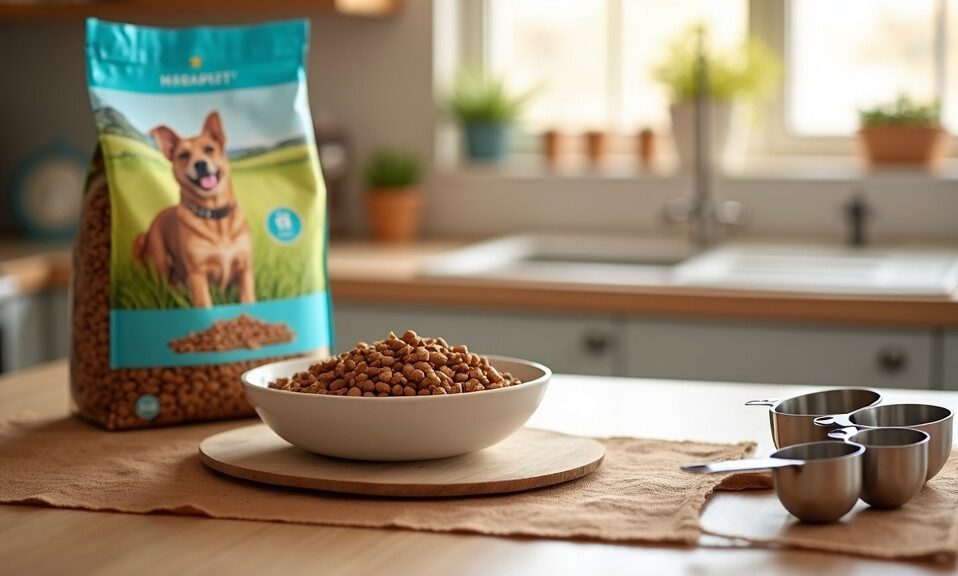Guide To Reading Pet Food Labels For Nutrient Balance
Pet food labels can look like they’re written in a foreign language sometimes. When you encounter terms like ‘organic’ or ‘natural’, it’s easy to wonder what they really mean. In pet food lingo, ‘natural’ means the food shouldn’t have any artificial stuff in it, but that doesn’t automatically equal healthier or more nutritious. And ‘organic’? It’s about how ingredients are farmed and processed, and it should meet certain strict standards, just like organic food for humans.
Labels also have those long lists of ingredients that seem endless. What’s essential to note? Ingredients are listed by weight, so the first ones make up the bulk of what you’re feeding your pet. Be cautious with fillers or additives that add bulk but little nutrition. And if meat is the first ingredient, that usually means good protein content.
Pet food isn’t a free-for-all when it comes to labels. They’re regulated to some extent. In the U.S., it’s the Association of American Feed Control Officials (AAFCO) that sets standards, working closely with the FDA. You’ll see these standards at play, ensuring what’s claimed on the label holds true. This keeps misleading info off the shelves and ensures a basic level of nutritional soundness.
Ever notice a section called ‘guaranteed analysis’? This part lists minimum levels of crude protein and fat and maximum levels of fiber and moisture. It’s like the cliff notes for nutrient content. While it’s not the whole nutrition story, it gives you a starting point to see if the food generally fits your pet’s dietary needs.
Identifying Nutrient Balance: What to Look For
Balancing nutrition in pet food is a bit like putting together a jigsaw puzzle. Protein, fats, and carbs are the big pieces that need to fit just right. For most pets, their main energy source should be protein, coming from meat, poultry, or fish. But don’t ignore fats and carbs – they have their place too, providing nutrients essential for energy and overall health.
When you peek at pet food labels, vitamins and minerals like Vitamin E, calcium, and phosphorus are worth a closer look. These micronutrients play huge roles in everything from bone health to keeping a shiny coat. If they’re out of whack, it can lead to issues like brittle bones or dull fur.
Watch out for the signs of imbalanced nutrition in your pet’s behavior or physical condition. An overweight pet might be getting too many carbs or fats, while lethargy could suggest not enough protein. And when your pet food features on-pack claims like ‘complete’ or ‘balanced,’ it’s the nutritional adequacy statement that proves if those claims hold water. This part of the label tells you if the food meets established nutrient profiles or if it’s passed a feeding trial. This reassurance is golden.
Empowering Your Choices: Tips for Pet Owners
Picking the right pet food isn’t just about grabbing the fanciest label or the most expensive brand. You want a food that aligns with your pet’s life stage, whether they’re a playful kitten, a senior dog, or somewhere in between. Life stage nutrition is critical because what’s good for a puppy isn’t necessarily what your older dog needs.
Talking with your vet can provide insight into what ingredients work best for your pet’s specific health needs. Vets can help decode those labels and point out what might be missing from your pet’s diet.
Don’t hesitate to reach out to manufacturers, too. Companies that care about transparency are usually happy to answer questions about the sources of their ingredients and their production methods. A little communication can go a long way toward easing your mind.
Choosing trustworthy brands takes a bit of research. Look for companies that have vet nutritionists on their teams and those that conduct regular feeding trials. These brands often prioritize sourcing quality ingredients, which can be a good marker of trust and reliability in your pet’s diet.